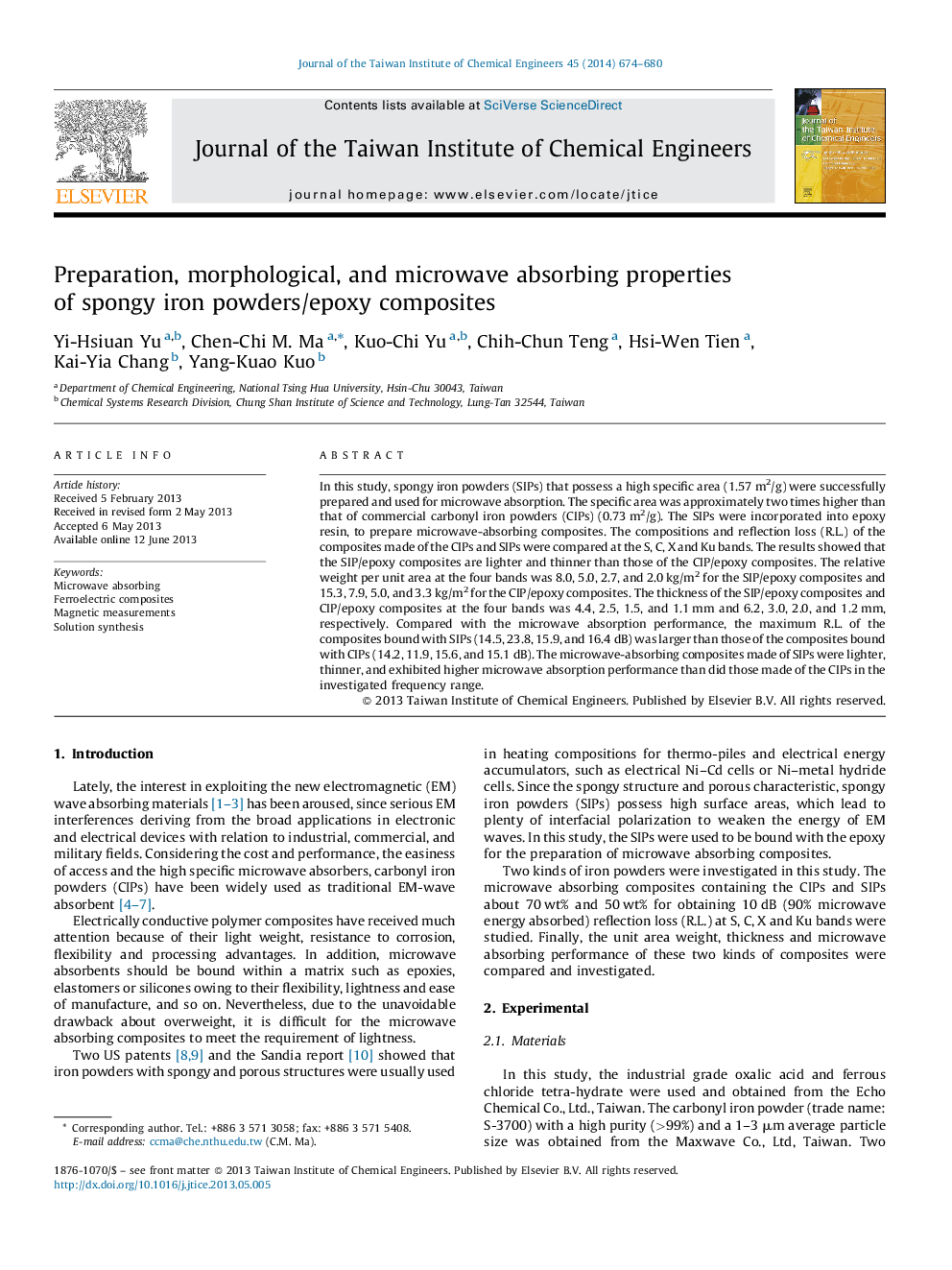| Article ID | Journal | Published Year | Pages | File Type |
|---|---|---|---|---|
| 691409 | Journal of the Taiwan Institute of Chemical Engineers | 2014 | 7 Pages |
Abstract
In this study, spongy iron powders (SIPs) that possess a high specific area (1.57Â m2/g) were successfully prepared and used for microwave absorption. The specific area was approximately two times higher than that of commercial carbonyl iron powders (CIPs) (0.73Â m2/g). The SIPs were incorporated into epoxy resin, to prepare microwave-absorbing composites. The compositions and reflection loss (R.L.) of the composites made of the CIPs and SIPs were compared at the S, C, X and Ku bands. The results showed that the SIP/epoxy composites are lighter and thinner than those of the CIP/epoxy composites. The relative weight per unit area at the four bands was 8.0, 5.0, 2.7, and 2.0Â kg/m2 for the SIP/epoxy composites and 15.3, 7.9, 5.0, and 3.3Â kg/m2 for the CIP/epoxy composites. The thickness of the SIP/epoxy composites and CIP/epoxy composites at the four bands was 4.4, 2.5, 1.5, and 1.1Â mm and 6.2, 3.0, 2.0, and 1.2Â mm, respectively. Compared with the microwave absorption performance, the maximum R.L. of the composites bound with SIPs (14.5, 23.8, 15.9, and 16.4Â dB) was larger than those of the composites bound with CIPs (14.2, 11.9, 15.6, and 15.1Â dB). The microwave-absorbing composites made of SIPs were lighter, thinner, and exhibited higher microwave absorption performance than did those made of the CIPs in the investigated frequency range.
Related Topics
Physical Sciences and Engineering
Chemical Engineering
Process Chemistry and Technology
Authors
Yi-Hsiuan Yu, Chen-Chi M. Ma, Kuo-Chi Yu, Chih-Chun Teng, Hsi-Wen Tien, Kai-Yia Chang, Yang-Kuao Kuo,
